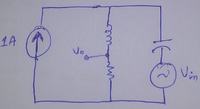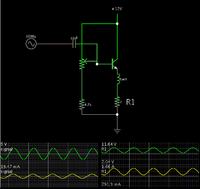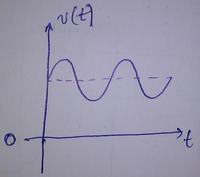muhibraza
Member level 1

- Joined
- Oct 11, 2010
- Messages
- 38
- Helped
- 3
- Reputation
- 6
- Reaction score
- 3
- Trophy points
- 1,288
- Activity points
- 1,578
hello
I have winded 27 turns on a toroid now I want to find its inductance at 1 Ampere dc current. what is the method for doing this ?
I previously measured the inductance by an RL filter and its cutoff frequency formula but I measured it on sine wave with no dc component. I now need a DC offset too that results in 1 Ampere current flowing through the RL filter, then I would superimpose the 10V (peak) sin wave and find the value of L using the same formula. The main thing is that 1 ampere current but I dont know how to implement the circuit. I have to make the following circuit. I do not have a bench current source but I do have a voltage source :

any help would be appreciated
I have winded 27 turns on a toroid now I want to find its inductance at 1 Ampere dc current. what is the method for doing this ?
I previously measured the inductance by an RL filter and its cutoff frequency formula but I measured it on sine wave with no dc component. I now need a DC offset too that results in 1 Ampere current flowing through the RL filter, then I would superimpose the 10V (peak) sin wave and find the value of L using the same formula. The main thing is that 1 ampere current but I dont know how to implement the circuit. I have to make the following circuit. I do not have a bench current source but I do have a voltage source :

any help would be appreciated





